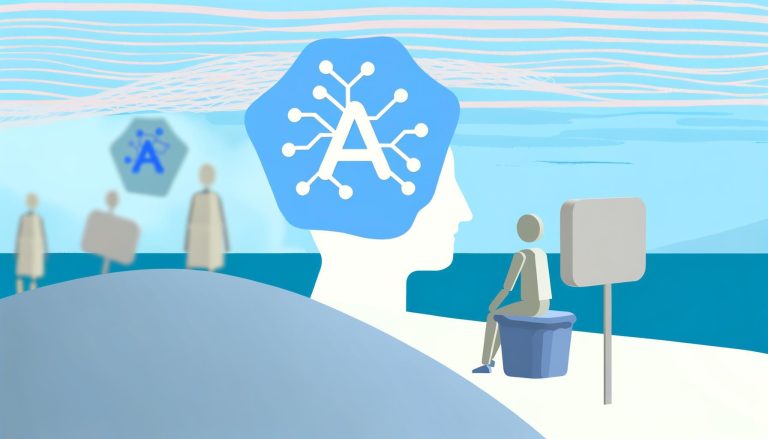Selective mutism (SM) is a complex childhood anxiety disorder characterized by a child’s inability to speak in certain social situations despite being able to speak in others. As the role of artificial intelligence (AI) in healthcare continues to expand, it’s worth exploring how AI can impact the treatment and management of selective mutism. This article will delve into current strategies, examine the potential of AI in enhancing these treatments, and offer practical tips for incorporating AI into selective mutism therapy.
Understanding Selective Mutism
Selective mutism often manifests in early childhood, typically between the ages of three and six. Children with SM can speak comfortably in familiar settings, such as at home with family members, but may struggle to communicate in more public environments like school or social gatherings.
Symptoms and Diagnosis
The main symptom of selective mutism is the consistent failure to speak in specific social situations where there is an expectation for speaking (e.g., at school) despite speaking in other situations. Other symptoms may include:
- Shyness and social anxiety
- Avoidance of eye contact
- Difficulty expressing feelings even through non-verbal means
- Clinging behavior or tantrums in social settings
A diagnosis is typically made by a mental health professional based on behavioral assessments and interviews with the child and family. Early diagnosis and intervention are crucial for effective treatment.
The Role of AI in Treating Selective Mutism
Artificial intelligence offers promising tools to supplement traditional treatments for selective mutism. AI’s capabilities in personalized therapy, data analysis, and remote access potentially offer significant benefits for children with SM and their families.
Personalized Therapy
AI can help customize therapeutic approaches based on the child’s specific needs. For instance, machine learning algorithms can analyze data from past therapy sessions to identify patterns and recommend interventions tailored to the child’s unique circumstances. Personalized therapy plans may include:
- Customized exposure therapy to gradually build the child’s confidence in speaking situations they find challenging
- Interactive and engaging AI-driven apps that encourage verbal communication through game-like scenarios
- Speech recognition software to provide real-time feedback and positive reinforcement
Data-Driven Insights
AI can assist healthcare providers in gathering and analyzing large amounts of data that would be challenging to interpret manually. This could include:
- Tracking progress over time by evaluating changes in the child’s speaking patterns across different environments
- Identifying triggers and barriers to communication
- Analyzing the effectiveness of various treatment strategies and making data-driven adjustments
Leveraging these insights can lead to more effective and efficient treatment plans, enabling quicker resolution and better outcomes for children with selective mutism.
Enhanced Accessibility
AI-powered tools can provide remote access to therapeutic support, which is particularly beneficial for families who may have limited access to specialized treatment facilities. Some practical applications include:
- Virtual therapy sessions conducted through AI-enabled platforms that allow children to interact with therapists from home
- AI-driven virtual support groups connecting children with selective mutism and their families to others facing similar challenges
- Mobile apps that offer exercises and games designed to encourage speech in a comfortable, familiar setting
By breaking down geographical and logistical barriers, AI can help ensure that more children receive the support they need.
Benefits and Practical Tips for Using AI in Treating Selective Mutism
As we consider incorporating AI into treatment plans for selective mutism, it’s essential to outline the potential benefits and practical tips for integrating these technologies effectively.
Improved Engagement and Motivation
Interactive AI platforms can make therapy more engaging and enjoyable for children. By leveraging gamification and interactive elements, AI tools can keep children motivated and invested in their therapy. To enhance engagement, consider the following:
- Select AI apps that offer a variety of interactive activities tailored to the child’s interests
- Use positive reinforcement through AI-driven feedback mechanisms to reward progress
- Incorporate the child’s preferences and strengths into the therapy plan
Consistency and Routine
AI tools can help establish consistent routines, which are crucial for children with selective mutism. Consistent therapy schedules and regular practice can be facilitated through AI-driven reminders and structured activities. Tips for maintaining consistency include:
- Set regular times for AI-assisted therapy sessions to build a routine
- Use AI reminders to prompt regular practice in speaking situations
- Track progress using AI tools to maintain accountability and motivation
Parental Involvement and Support
Parents and caregivers play a vital role in addressing selective mutism. AI can offer resources and tools to involve and support them in the therapeutic process, such as:
- AI-powered platforms providing educational resources and training for parents
- Virtual support groups facilitated by AI, connecting parents to share experiences and strategies
- Data-sharing features that allow parents to track their child’s progress and collaborate with therapists
Conclusion
Artificial intelligence has the potential to revolutionize the treatment of selective mutism by offering personalized, data-driven, and accessible solutions. By integrating AI tools into traditional therapy methods, we can provide more effective and engaging support for children with SM, ensuring that they have the best possible chance to overcome their communication barriers.
It’s important to remember that while AI offers significant benefits, it should complement rather than replace traditional therapeutic practices. Ongoing collaboration between mental health professionals, families, and AI developers will be essential to harness the full potential of these technologies.
For those interested in leveraging AI to enhance mental health support, the Zenora app offers a range of features, including mood and habit tracking, goal setting, and personalized psychological advice, which can be valuable resources in supporting children with selective mutism.





